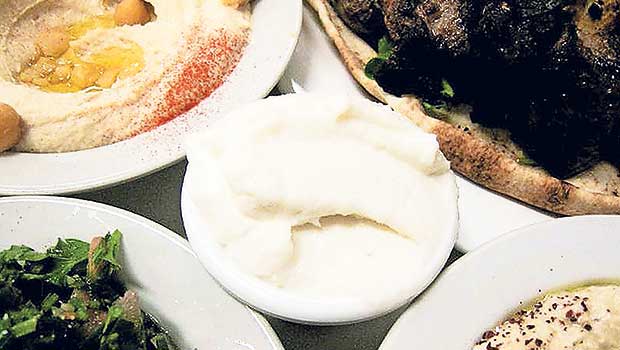
Some people say that garlic is a spice. Others call it an herb. Actually, garlic is a vegetable, part of the Allium family that includes onions, leeks, chives and scallions.
Garlic grows underground as a bulb, which is comprised of individual sections called cloves. It is noted for its taste and characteristic odor. But what is less known are its health benefits. Garlic has been used since ancient Egypt to treat a myriad of illnesses including parasite infection, arthritis, general malaise and even the plaque.
In more modern times it is known for its impact on heart disease and cancers. Cardiologists tout its ability to reduce conditions linked to the cardiovascular system, including atherosclerosis, or hardening of the arteries, high cholesterol, hypertension and heart attack.
According to the American Institute of Cancer Research (AICR), studies suggest that garlic may prevent prostate, stomach and colon cancer.
Each small clove is surprisingly rife with health-preserving elements. It is an excellent source of manganese that’s important for bone health, and vitamin B6, which is essential for function of the nervous system. It also contains vitamin C, which boosts the immune system and wards off eye disease. Selenium protects cells from damage.
There’s a trick, however, to get the health benefits of garlic. Instead of adding it to foods immediately after cutting or mincing, health experts recommend allowing it to sit for 10 to 15 minutes. This allows allicin, its main ingredient, and other enzymes to become activated. It is also recommended to add garlic towards the end of the cooking process to retain its maximum nutrition and flavor.
Nutritionists at the AICR have developed a recipe that combines garlic with cauliflower and chickpeas and spices it up with curry. The combination of roasted cauliflower and tomatoes with sautéed onions and garlic, wilted baby spinach and chickpeas produces a wonderful garden flavor.
Cauliflower is part of the cruciferous family that also includes broccoli, Brussels sprouts, bok choy and cabbage. Cruciferous veggies have attained recognition in their own right as cancer fighters. Crucifers lower the risk of colorectal cancer, according to the AICR, and probably lower the risk of cancers of the mouth, esophagus and stomach.
Chickpeas have a delicious nutty taste, and are high in protein and fiber, which are filling and keep you feeling full longer.

Curry contains turmeric, which gives a yellow color. Curcumin, the main ingredient of turmeric, contains phytochemicals, which reduce the risk of cancer. Two recent studies suggest that curcumin is effective in treating head and neck cancer.
Cauliflower and Chickpea Curry
This curry dish is perfect as a side dish or ideal as a light vegetarian lunch or dinner when served over a bed of brown rice. It is great as leftovers either reheated or served cold.
- 1 large cauliflower, cut into florets
- 1½ pints cherry tomatoes, cut in half
- 2 tbsp. canola oil, divided
- Salt and freshly ground black pepper
- 2 medium onions, chopped
- 2 cloves garlic, minced
- 2 tbsp. curry powder
- 2 (15 oz.) cans no salt added chickpeas, drained and rinsed
- 1 cup light coconut milk
- 1½ cups low-sodium vegetable broth
- 3 cups baby spinach
Preheat oven to 375 degrees.
In large mixing bowl, toss cauliflower and tomatoes with one tablespoon oil and arrange in single layer on rimmed baking sheet. Season with salt and pepper. Roast until florets are browned in spots and tomatoes are soft, about 25 minutes.
In a medium pot, heat remaining oil over medium-high heat and sauté onion about five minutes. Add garlic and curry powder and sauté an additional three to four minutes.
Add chickpeas, coconut milk and broth and bring to a boil. Reduce heat to medium, cover and simmer eight minutes.
Gently stir cauliflower and tomatoes into pot and cook six minutes. Stir in spinach and cook one to two minutes until spinach wilts. Serve hot or let cool and refrigerate to serve chilled later.
Makes 8 servings.
Per serving:
Calories: 224
Total fat: 9 g total fat
Saturated fat: 3 g
Carbohydrate: 30 g
Protein: 10 g
Fiber: 9 g
Sodium: 67 mg
Recipe and video courtesy of American Institute for Cancer Research






